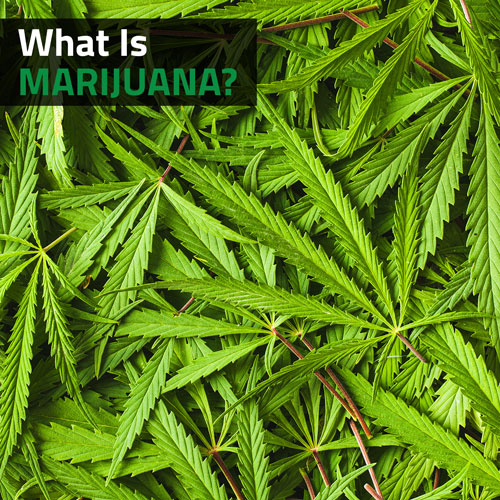Cannabis or, as it’s commonly known, Marijuana, is a greenish-grey dried plant from the Cannabaceae family. Marijuana is the clinical name for the psychoactive compound (THC) in cannabis, and it has numerous medicinal and recreational properties. Every culture throughout history has used marijuana for different purposes, and we are still learning more about this enigmatic plant.
Marijuana has an incredibly long history and because of the fight by cannabis activists to legalise marijuana across the world, the history of marijuana is increasingly becoming a topic of discussion. There is a lot of information out there and scientists are still conducting research to pinpoint the exact origin of cannabis, with that being said we are going to try our best to give you the truth and nothing but the truth.
Where And How Was Marijuana Discovered?
Marijuana use dates all the way back to the B.C. era in Central and South Asia before making its way to Africa not too long after. The consensus around the scientific world is that marijuana originates in Central Asia. It is believed that the first member of the Cannabaceae family was discovered when ancient tribes in Asia followed animals to identify plants that were edible and those that were poisonous.
Historians believe that these ancient tribes paid close attention to detail when watching these animals, and they observed that the sick and injured animals would graze more on these Cannabaceae plants than those that were healthy. This led the tribes to believe that the Cannabaceae plant had healing properties, and they began to depend heavily on the cannabis plants to alleviate their illnesses and ailments.
Based on this information we can see that historically, marijuana was not used for recreational or even entheogenic purposes, instead it was used to treat certain ailments and later to make clothes and as a sustainable food source. Through extensive archaeological research and expeditions, scientists have found evidence dating as far back as 3000 BC of hemp clothing, shoes, and even cultural artefacts made of hemp in different parts of Asia. This lends more weight to the belief that the Cannabaceae plant is in fact indigenous to Central Asia.
-
 Crafty +R5,500.00
Crafty +R5,500.00
When And How Was Cannabis Used For Medicinal Purposes
Based on the extensive research that has been conducted in the past century, as well as what we know about how ancient cultures first discovered the Cannabaceae plants, we can safely assume that the distinction between marijuana (THC) and CBD was something that was discovered relatively recently.
According to historians, cannabis was first used for its therapeutic properties in 129 – 200 AD by a Chinese surgeon as an anaesthetic. More information regarding this time period suggests that Chinese pharmacists were in fact in possession of Cannabis Indica, which today is known for having a higher CBD:THC ratio – resulting in more medicinal properties. During this time, it was documented by pharmacists that they managed to figure out that different parts of the plants work significantly well in targeting certain medical conditions, for instance:
- Roots of the plant could remove/dissolve a blood clot
- When ingested, juice from the leaves can deal with a tapeworm
- Crushed cannabis seeds relieved several ailments from constipation to countering hair loss
Years later, during the Ming dynasty, it was discovered that the flowering female heads were the source of incredible dreams and revelations. The medical journals of that era are full of stories of what we would call a “wild trip”. In traditional Chinese medicine, cannabis is 1 of 50 fundamental herbs and is used to treat a myriad of illnesses.
Although marijuana originates in Central and South Asia, it quickly made its way around the world, even way back then. Traces of cannabis were found in an ancient grave in The Netherlands, alongside a man who archaeologists believe was severely ill and was using cannabis for pain relief. In Ancient Egypt, the Ebers Papyrus, which is basically a medical journal, describes how cannabis was used to relieve pain and reduce inflammation.
In Ancient Greece, cannabis, in different formulations, was used to reduce inflammation, alleviate general pain and even expel tapeworms. The Greeks, in fact, seem to be the first ones to use cannabis for veterinary purposes, as they dressed the wounds of their horses with clothes covered in cannabis. Arabic physicians, during the Islamic Golden Age, used cannabis to treat:
- Fever
- Nausea
- Inflammation
- Epilepsy
- Relieve pain and as a
- Diuretic
Cannabis only made its way to the western parts of the world in the mid 19th century, where its therapeutic and recreational properties were further researched and documented on a larger and wider scale and would eventually be stigmatised and criminalised, until recently.
Religious Origins Of Cannabis
Cannabis has served as an entheogenic substance in many religions and cultures. Cannabis has been used in the Indian subcontinent as far back as the Vedic period as an entheogen. It was used to induce a certain state of mind that brought about spiritual enlightenment. Shiva was given the nickname “The Lord of Bhang” because of his love for the cannabis plant, which was his favourite food.
Furthermore, it has been documented by Herodotus, a great Greek historian, that Scythians from the Middle East used Cannabis in steam baths and smoked burning cannabis seeds to not only relax, but as part of an ancient ritual. Ancient Assyrian’s also used cannabis to induce a trance, and cannabis found in the Kingdom of Judah suggests that cannabis has been used by many cultures and religions for its psychoactive properties for ritualistic or religious purposes.
These uses of cannabis for religious purposes are still alive and well, especially in the Rastafari culture, who consume cannabis as a sacrament and use it to aid in meditation during their groundations. Cannabis has a long history that spans across the entire world. There isn’t a single place in the world where the Cannabaceae family hasn’t reached. With cannabis being legalised and decriminalised in many parts of the world, we can expect the Cannabaceae family to get even bigger through genetic modifications and mutations from being cultivated in different temperate zones.






